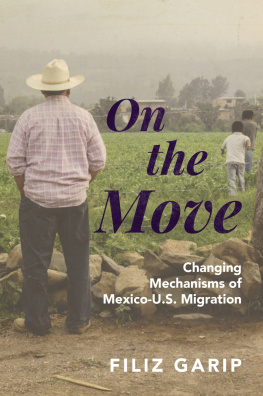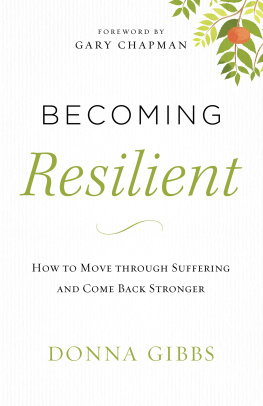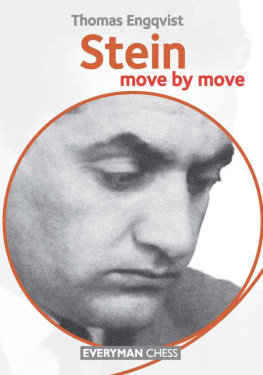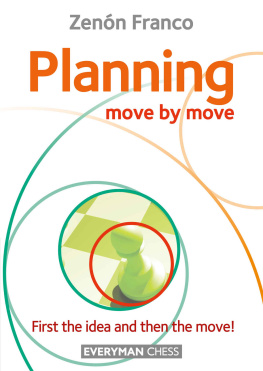Garip - On the Move
Here you can read online Garip - On the Move full text of the book (entire story) in english for free. Download pdf and epub, get meaning, cover and reviews about this ebook. year: 2016, publisher: Princeton University Press, genre: Politics. Description of the work, (preface) as well as reviews are available. Best literature library LitArk.com created for fans of good reading and offers a wide selection of genres:
Romance novel
Science fiction
Adventure
Detective
Science
History
Home and family
Prose
Art
Politics
Computer
Non-fiction
Religion
Business
Children
Humor
Choose a favorite category and find really read worthwhile books. Enjoy immersion in the world of imagination, feel the emotions of the characters or learn something new for yourself, make an fascinating discovery.
On the Move: summary, description and annotation
We offer to read an annotation, description, summary or preface (depends on what the author of the book "On the Move" wrote himself). If you haven't found the necessary information about the book — write in the comments, we will try to find it.
On the Move — read online for free the complete book (whole text) full work
Below is the text of the book, divided by pages. System saving the place of the last page read, allows you to conveniently read the book "On the Move" online for free, without having to search again every time where you left off. Put a bookmark, and you can go to the page where you finished reading at any time.
Font size:
Interval:
Bookmark:

ON THE MOVE
PRINCETON ANALYTICAL SOCIOLOGY SERIES

Filiz Garip, On the Move:
Changing Mechanisms of Mexico-U.S. Migration
Emily Erickson, Between Monopoly and Free Trade:
The English East India Company, 16001757
ON THE MOVE
Changing Mechanisms of Mexico-U.S. Migration
Filiz Garip
PRINCETON UNIVERSITY PRESS
Princeton and Oxford
Copyright 2017 by Princeton University Press
Published by Princeton University Press, 41 William Street, Princeton, New Jersey 08540
In the United Kingdom: Princeton University Press, 6 Oxford Street, Woodstock, Oxfordshire
OX20 1TR
press.princeton.edu
Jacket photograph courtesy of Patricia Martn
All Rights Reserved
ISBN 978-0-691-16106-8
British Library Cataloging-in-Publication Data is available
This book has been composed in Janson Text LT Std
Printed on acid-free paper.
Printed in the United States of America
1 3 5 7 9 10 8 6 4 2
To Rukiye, Remzi,
Aylin, and Mert
Contents
List of Illustrations
List of Tables
Acknowledgments
I could not have written this book without the help and support of my family, friends, and colleagues. The initial idea for the book came out of a conversation with my husband, Mert, over our kitchen table. We were talking about statistics (of all the topics out there) and how the specific applications varied across fields. Mert explained to me how classification tools were the key in his field of electrical engineering. And it was then that I thought it would be interesting to see if one could use these tools to identify different groups among migrants.
Mert not only gave me the initial insight, but also fully supported me through all the ups and downs of the project. For two years, he worked hard to create extra time for me, taking our children, Leyla and Deniz, on various excursions so that I could write freely for a few more hours on the weekends. During the last six months of writing, the most painful period by far, he sat across from me at the Gutman library every day. It is thanks to his presence that I could concentrate and continue to write despite my desperation at times.
For nearly four years, this book occupied a large space not just in my life, but also in the lives of my parents, Remzi and Rukiye, my sister, Aylin, my parents-in-law, Mustafa and Maggie, and my brother-in-law, Metin. They never tired of hearing my ramblings about the various analyses I was trying to complete or the paragraphs I was trying to work out. I am grateful to them for listening and not saying enough already. I am also thankful to my dear friend Teresa Gelardo for setting strict deadlines for me and sending not-so-gentle reminders.
The data for the project come from the decades of work done by the Mexican Migration Project (MMP) team led by Doug Massey and Jorge Durand. It is to this team that I turned when I needed to collect qualitative data in Mexico. Doug and Jorge were incredibly generous in helping me gather a fantastic research team in Mexico, select communities for fieldwork, and figure out all the logistics. Helen Marrow and Jackie Hagan provided several ideas that shaped the data collection strategy. My research team included Anabel Flores, Brbara Gmez, Yonathan Lizalde, Gabriela Lpez, Leonardo Trujillo, and Karina Velascoall members of the MMP family. Karina Sayrols, Marcela Casillas, and Paola Mora later helped with the translations. I am thankful to all of them for their hard work, but especially to Karina (santa de los perros) who masterfully organized our days, kept us to our schedule, and even cooked chicken soup for me when I got sick. I am also grateful to Gabriela, who turned out to be a natural at interviewing people, and continued to collect data for us even after the initial fieldwork ended. My dear friend, and brilliant artist, Patricia Martn-Snchez, was my right hand during fieldwork, translating all conversations from Spanish to English, and shooting the stunning photographs that grace the pages of the book. She was also there long before the fieldwork started, reading and translating the Mexican literature on migration and acting as a sounding board for my preliminary ideas.
Doug Massey, who was an advisor on my dissertation, has given me unconditional support from the first day that he heard about this project. When a paper from the project was rejected by a journal, and when I was ready to give up on the idea, Doug told me the paper was good and that I should continue to work on it. I trusted his judgment more than I trusted mine. And I continued to work on it. Mary Waters, my dear colleague at Harvard, also played a similarly crucial role, giving me support, encouragement, and much needed feedback through the years. She also had the great idea of organizing a book conference where I would invite experts in the field to come to Harvard and to read my manuscript. It was hard to believe that people would agree to do that, but they did. Frank Bean, Katharine Donato, David FitzGerald, Peggy Levitt, and Roger Waldinger traveled from all over the country to Cambridge in the dead of winter to lend me their wisdom. The book improved immensely thanks to their feedback and also to feedback from Asad L. Asad and Mao-Mei Liu, who were in attendance as well. I can never pay back their generosity, but I promise to at least try to pay forward to the next generation of scholars.
I shared earlier versions of this book with many colleagues. My former advisors from Princeton, Sara Curran, Paul DiMaggio, and Viviana Zelizer, were among the first to see the book proposal. Their immediate and glowing response gave me much-needed confidence. My editors at Princeton University Press, Eric Schwartz and Meagan Levinson, and editors of the Analytical Sociology series, Peter Bearman and Peter Hedstrm, also believed in the project, which helped me go on.
I presented versions of this book at seminars at Barnard, Brown, Columbia, Cornell, Duke, Max Planck Institute, Michigan, MIT, Oxford, Princeton, Stanford, University of Washington, UMassAmherst, UCLA, UCSD, and Yale. The comments and suggestions at these seminars were important in pushing the ideas forward.
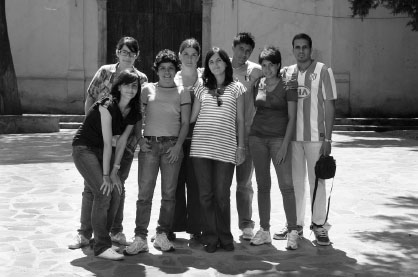
Project team in Mexico (from left to right): Brbara, Patricia, Gabriela, Karina, Filiz, Leo, Anabel, and Yonathan
PHOTO BY Patricia Martn
Many conversations with my colleagues at HarvardMary Brinton, David Carrasco, Matt Desmond, Frank Dobbin, Kathy Edin, Maggie Frye, Sandy Jencks, Gary King, Michle Lamont, Stanley Lieberson, Peter Marsden, Devah Pager, Orlando Patterson, Rob Sampson, Judy Singer, Jocelyn Viterna, Bill Wilson, Chris Winship, Marty Whyte, and Bruce Westernhelped me tease out my ideas and see the project from new angles. Intense writing sessions with my colleague (and one of my favorite writers) Mario Small improved the ideas and exposition immensely. Contributions by the students, Asad L. Asad and Yvette Ramirez in particular, allowed me to complete (and make sense of) the analysis of the qualitative data. Funding from the Weatherhead Center for International Affairs (for much-needed leave time that allowed me to focus fully on research, for fieldwork in Mexico, and for the book conference) and the David Rockefeller Center for Latin American Studies (for fieldwork and the book conference) enabled me to bring the project to fruition. Help from Jeff Blossom at the Center for Geographic Analysis was important in producing the spatial analysis in the book. The office space provided by Kathy Edin and Bruce Western at the Malcolm Wiener Center for Social Policy helped me avoid distractions and concentrate on the book during my sabbatical year. Barbara Whalen was most gracious as a host during my time there. I especially thank her for helping me get an appointment with Felipe Caldern, the former president of Mexico, during his stay at the Harvard Kennedy School. And I am most grateful to the president for making the time to meet with me.
Next pageFont size:
Interval:
Bookmark:
Similar books «On the Move»
Look at similar books to On the Move. We have selected literature similar in name and meaning in the hope of providing readers with more options to find new, interesting, not yet read works.
Discussion, reviews of the book On the Move and just readers' own opinions. Leave your comments, write what you think about the work, its meaning or the main characters. Specify what exactly you liked and what you didn't like, and why you think so.

